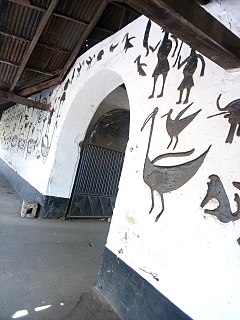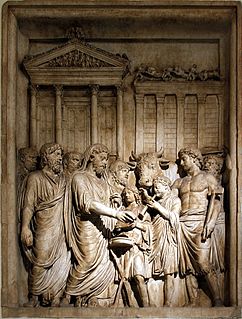Kanran, or Karan, was an Alaafin of the Oyo Empire. He succeeded Oba Odarawu.

Alaafin, or Man of the Palace in the Yoruba language, was the title of the emperor of the medieval Oyo empire of West Africa. It was retained through the fall of that state as the official title of the ceremonial ruler of the contemporary natives of Oyo, Nigeria.

The Oyo Empire was a Yoruba empire of what is today Benin and North central Nigeria. Established in the 12th century, the Oyo Empire grew to become one of the largest West African states. It rose through the outstanding organizational and administrative skills of the Yoruba people, wealth gained from trade and its powerful cavalry. The Oyo Empire was the most politically important state in the region from the mid-15th to the late 18th century, holding sway not only over most of the other kingdoms in Yorubaland, but also over nearby African states, notably the Fon Kingdom of Dahomey in the modern Republic of Benin to the west.
Odarawu was an Alaafin of the Oyo Empire, who ruled briefly during the late seventeenth century. He was reportedly the first Alaafin to be rejected by the Oyo Mesi.
He was considered a fierce and tempestuous leader, and is said to have subjected his subjects to severe punishments. He inspired the Oyo proverb, 'O nika ninu ju Karan lo' ('He is as cruel as Karan'). [1]
As a result of his propensity to harm his own people, a plot to terminate him or get him to abdicate the throne was entered into by his nobles. He was rejected by the Oyo Mesi (the principal counselors of the state) but defied the subsequent pressure to commit suicide. [2] When the army entered his city, Kanran reportedly climbed onto the roof of his palace and shot arrows at them until the building was set on fire. [3]
Harm is a moral and legal concept.
He was succeeded by his son Jayin.

